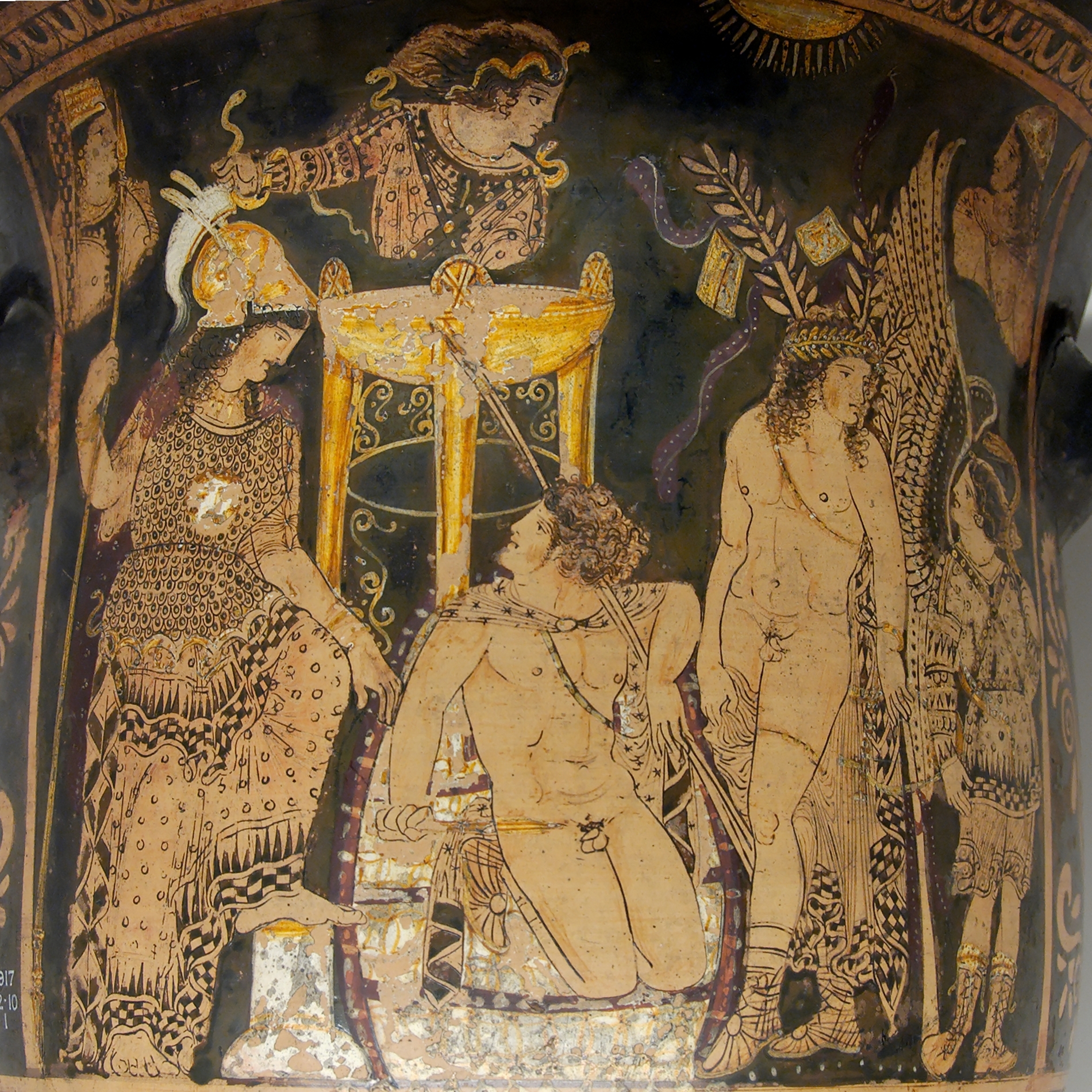|
Dataminae
Datamini is the only tribe within the subfamily of the Dataminae from the order of the Phasmatodea. The representatives of this subfamily are on average not as large as those of the other two subfamilies belonging to the family of Heteropterygidae. Description Datamini species remain relatively small for phasmids. In females, the body length varies between 2.5 and 6 cm, depending on the species. The males remain somewhat smaller with a body length of less than 2 to a maximum of 5 cm. The presence of sensory areas, which is considered to be the autapomorphic characteristic of the Heteropterygidae, is fully developed in the Dataminae. With them there is a pair of these sensory fields on the Prosternum and a third in the middle behind it on the so-called (Pro-) Furcasternit. All species are wingless in both sexes. The females lack the secondary ovipositor typically developed in the other subfamilies at the end of the abdomen. Their abdomen ends bluntly. In adult females ... [...More Info...] [...Related Items...] OR: [Wikipedia] [Google] [Baidu] |
Heteropterygidae
The Heteropterygidae is a family of stick insects belonging to the suborder Euphasmatodea. Species can be found in Australasia, East and Southeast Asia. More than 130 valid species have been described (at the end of 2020). Characteristics Size The Heteropterygidae include both very small and very large and massive species. The representatives of the Dataminae are consistently rather small. So ''Planispectrum'' species are only long. The largest Dataminae species, with a maximum length of , are within the genera ''Pylaemenes'' and ''Orestes''. While the subfamily Obriminae with almost in ''Tisamenus hebardi'' and up to in ''Trachyaretaon carmelae'' shows a wide range of sizes, the Heteropteryginae are considered rather large. Indeed, there are very large and massive species, such as the up to long ''Heteropteryx dilatata'' known as Malayan jungle nymph, but also small species such as those in the male sex only long ''Haaniella parva''. Morphology A common autapomorphic ... [...More Info...] [...Related Items...] OR: [Wikipedia] [Google] [Baidu] |
Pylaemenes Mitratus
''Pylaemenes mitratus'' is a species of stick insects (Phasmatodea) native to Malay Peninsula and Sumatra. Description The females reach a length of . The males are long. The species corresponds in its habitat to typical representatives of the Datamini and is similar in appearance to the ''Pylaemenes'' species from Borneo. Both sexes have a greatly enlarged and raised vertex structure on the head, which is formed from the rear head spines and the front edges of which converge towards the back and upwards in the shape of an inverted V. The supraantennas form a pair of laterally compressed spines in front, which are more prominent in males. Characteristic, at least for the females, is a conspicuous white spine on the upper side of the mesofemurs and two more on the metafemurs about a third away from the body. They are also found less prominently and somewhat smaller in males. The males have three pairs of individually differently pronounced pairs of spines on the upper side of ... [...More Info...] [...Related Items...] OR: [Wikipedia] [Google] [Baidu] |
Eocene
The Eocene ( ) Epoch is a geological epoch (geology), epoch that lasted from about 56 to 33.9 million years ago (mya). It is the second epoch of the Paleogene Period (geology), Period in the modern Cenozoic Era (geology), Era. The name ''Eocene'' comes from the Ancient Greek (''ēṓs'', "dawn") and (''kainós'', "new") and refers to the "dawn" of modern ('new') fauna that appeared during the epoch. The Eocene spans the time from the end of the Paleocene Epoch to the beginning of the Oligocene Epoch. The start of the Eocene is marked by a brief period in which the concentration of the carbon isotope Carbon-13, 13C in the atmosphere was exceptionally low in comparison with the more common isotope Carbon-12, 12C. The end is set at a major extinction event called the ''Grande Coupure'' (the "Great Break" in continuity) or the Eocene–Oligocene extinction event, which may be related to the impact of one or more large bolides in Popigai impact structure, Siberia and in what is now ... [...More Info...] [...Related Items...] OR: [Wikipedia] [Google] [Baidu] |
Orestes Draegeri, Pair
In Greek mythology, Orestes or Orestis (; grc-gre, Ὀρέστης ) was the son of Clytemnestra and Agamemnon, and the brother of Electra. He is the subject of several Ancient Greek plays and of various myths connected with his madness and purification, which retain obscure threads of much older ones. Etymology The Greek name Ὀρέστης, having become "Orestēs" in Latin and its descendants, is derived from Greek ὄρος (óros, “mountain”) and ἵστημι (hístēmi, “to stand”), and so can be thought to have the meaning "stands on a mountain". Greek literature Homer In the Homeric telling of the story, Orestes is a member of the doomed house of Atreus, which is descended from Tantalus and Niobe. He is absent from Mycenae when his father, Agamemnon, returns from the Trojan War with the Trojan princess Cassandra as his concubine, and thus not present for Agamemnon's murder by Aegisthus, the lover of his wife, Clytemnestra. Seven years later, Orestes ... [...More Info...] [...Related Items...] OR: [Wikipedia] [Google] [Baidu] |



